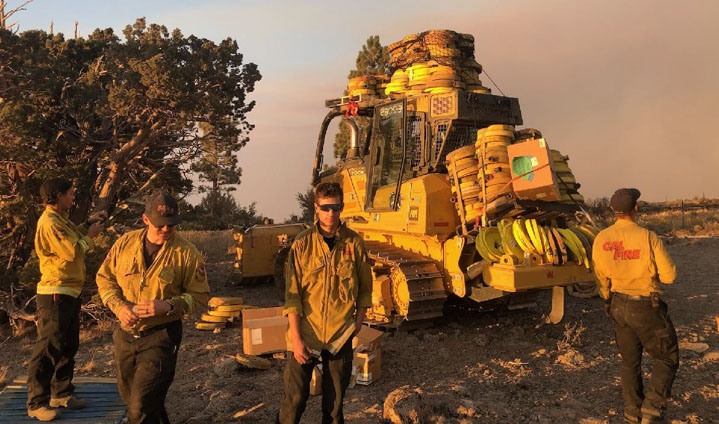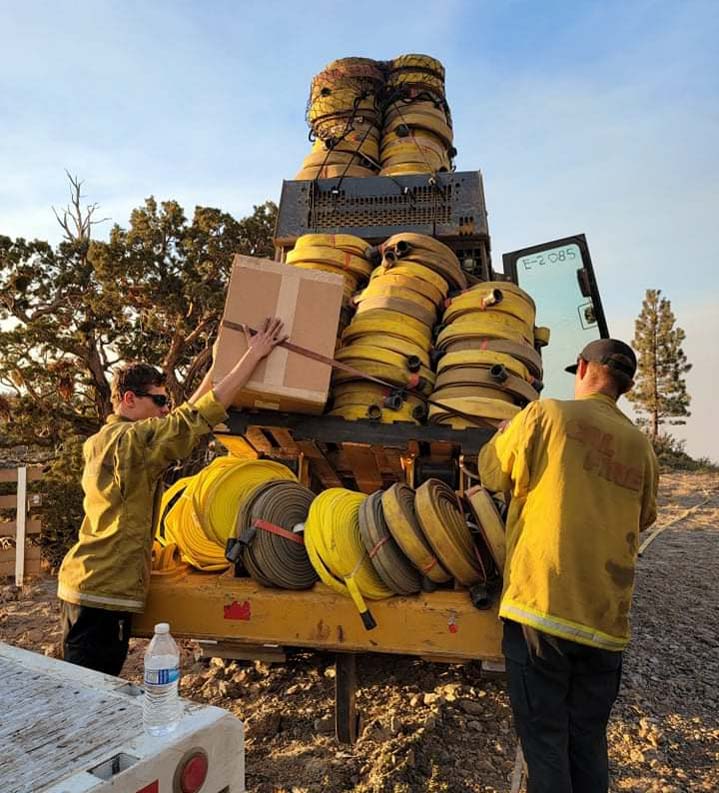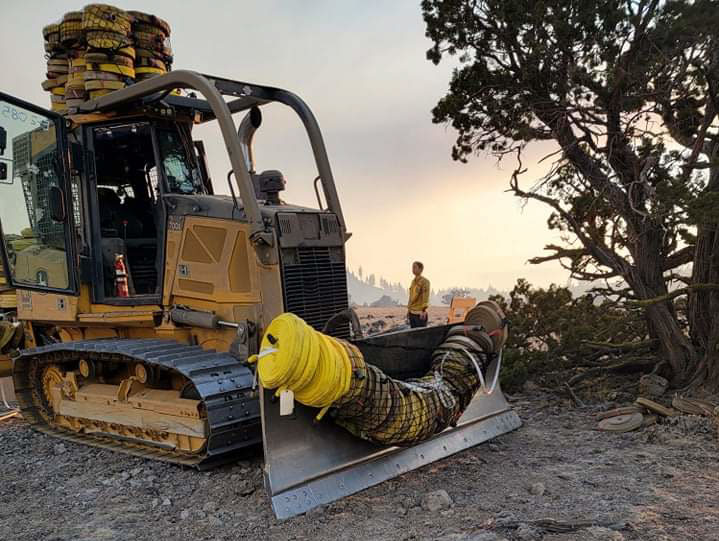8:02 a.m. PDT Sept. 9, 2021

Above is an updated map of the River Complex. The largest fire is the 162,543-acre Haypress Fire. The other is the Cronan Fire which has burned 5,940 acres.
Tuesday night and Wednesday morning the Haypress Fire established itself on Billy’s Peak during extreme fire behavior and a six-mile run to the northeast.
Resources assigned include 12 hand crews; 8 helicopters; 48 engines, 18 dozers; 26 water tenders; 9 masticators; 7 skid steers; 14 mules, and 3 horses for a total of 816 personnel and 17 animals. Six residences have been destroyed.
7:54 p.m. PDT Sept. 8, 2021
A fixed wing mapping flight early Wednesday morning roughly confirmed the heat detected on the River Complex by a satellite at 3:51 a.m. Wednesday (see the map below). At the video briefing from the Incident Management Team Wednesday evening the map being used had not been updated accurately in about 24 hours. The briefing did not include any information about additional significant fire spread during the day.
Wednesday was a little more humid, there was a cloud and smoke cover, and there was much less wind at the Callahan #2 weather station, all reasons for more subdued fire activity.
Thursday’s weather forecast for Callahan predicts very little wind through Friday morning except for six to nine mph breezes from the southwest for about six hours Thursday afternoon. The area will be under a Red Flag Warning from noon Thursday to noon on Friday for the possibility of dry lighting Thursday evening and night. There is a chance for a small amount of rain Thursday night.
12:32 p.m. PDT Sept. 8, 2021

The River Fire in Northwest California near Coffee Creek was extremely active Tuesday evening. After 5 p.m. the wind shifted at the Callahan #2 weather station to come out of the southwest gusting at 15 to 26 mph with relative humidity in the teens. At a Wednesday morning briefing the Operations Section Chief said this pushed the north side of the fire about two miles to the north in the South Fork drainage along Cecileville Road, prompting the evacuation of Callahan.
The east side of the fire rapidly spread up Wolford Creek to the northeast. It spotted across Coffee Creek southeast of the footprint of the 2014 Coffee Fire and continued to the northeast and east along Coffee Creek.
The Operations Section Chief said it was “Rapid explosive fire behavior and what we have been talking about as the worst case scenario of fire growth. It was a flaming crown run in the tree tops at a rapid pace.” The fire ran for about 6.5 miles along the Coffee Creek drainage, he said, creating spot fires up to two miles ahead.
The map above shows the fire perimeter (in green) from September 7. Cloud cover Tuesday night prevented a fixed wing aircraft from mapping the entire fire. A satellite detected heat at the red dot areas shown, and they were so far from the previous perimeter I at first doubted their accuracy. Satellites and even sensors in fixed wing aircraft can sometimes falsely identify heat in a very large, intense convection column of smoke as heat on the ground. But fires typically spread more slowly and with less intensity and heat at night. The satellite overflight was at 3:51 a.m. Wednesday when typically there is no very large smoke column. These heat locations also are consistent with the descriptions by the Operations Section Chief in the Wednesday morning briefing. The bottom line: if these satellite detections exaggerate the fire spread, it is not by much.
After the fire passed through the upper reaches of Coffee Creek firefighters rescued some residents who had earlier refused to evacuate.
On Wednesday firefighters expect the fire to move toward Mosquito Flats and the communities of Coffee Creek, Callahan, and Eagle Creek. They will make sure all of the residents are out of the mandatory evacuation areas which are on a map maintained by Siskiyou County. Air tankers will drop retardant near the communities if the inversion, wind, and smoke conditions allow the safe use of aircraft.
Personnel will assess areas southwest of the community of Coffee Creek for locations to construct contingency firelines. Damage assessment teams on Wednesday will begin working their way into the recently burned area to evaluate possible damage to structures.


















